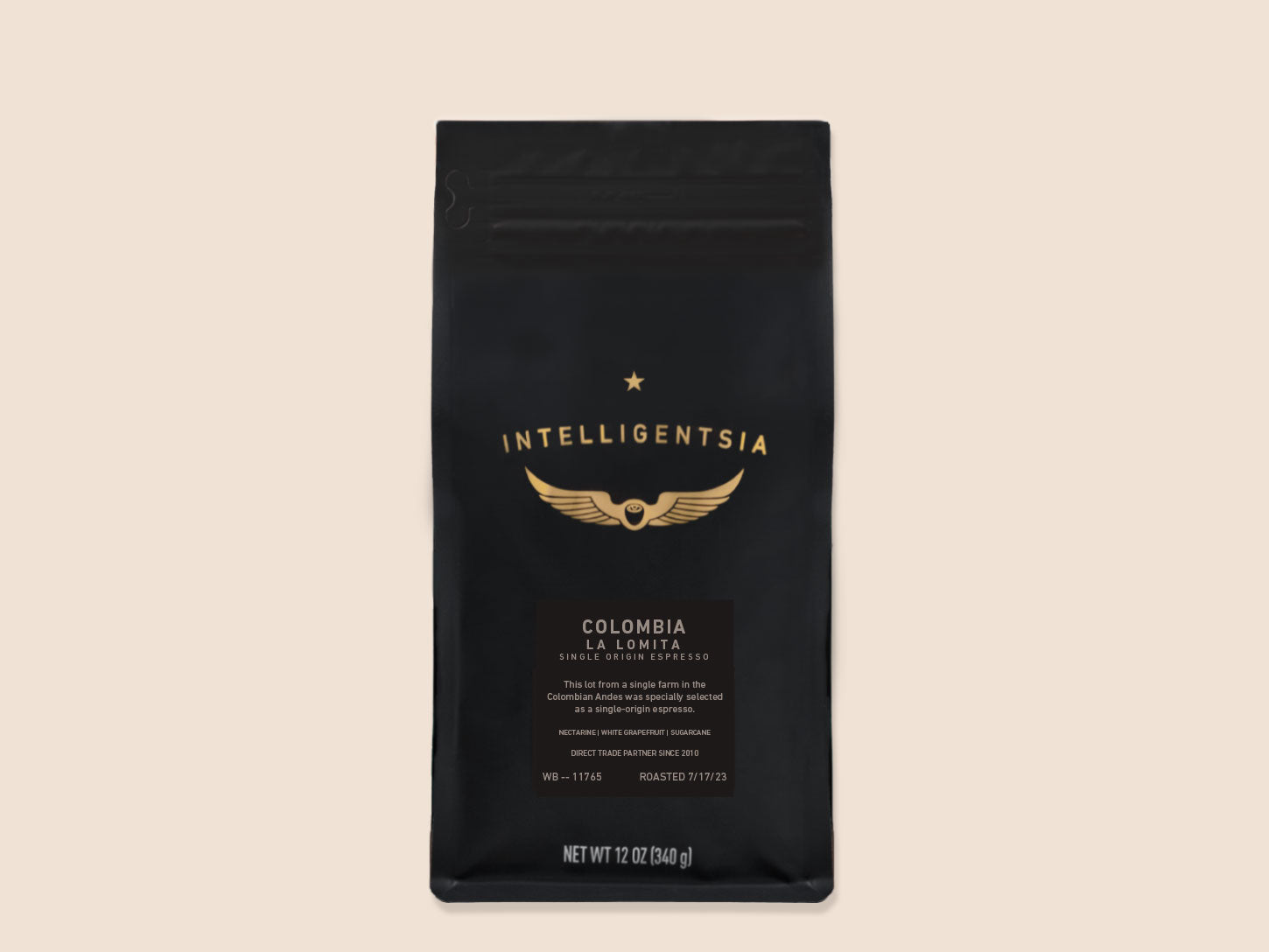Coffee Beans Uncovered: Finding the Secrets of Espresso and Blended Coffee Beans
When you consider coffee, what comes to mind? Is it the rich scent of coffee or the complexity of a well-crafted blend? Understanding the subtleties of coffee beans can change your experience. Each variety, from Arabica to Robusta, holds its very own secrets. As you discover better, you'll discover exactly how these beans shape tastes and influence sustainability. What might you uncover about your next mug?
The Beginnings of Espresso: A Historical Viewpoint
Although coffee is currently a staple in coffee culture worldwide, its origins map back to the early 20th century in Italy. You may be surprised to find out that the innovation of coffee was driven by a wish for rate and performance. In 1901, Luigi Bezzera patented the initial coffee maker, intending to brew coffee faster than standard techniques. This technology promptly recorded the focus of Italian coffee drinkers, bring about the espresso bars we recognize with today.
Recognizing Coffee Beans: Selections and Qualities
When you think of coffee, it's essential to recognize the various bean selections and their distinct tastes. Each type brings a distinct personality to your mug, influenced by elements like roast levels. Recognizing these elements can raise your coffee experience significantly.
Espresso Bean Varieties
As you discover the globe of coffee, you'll swiftly uncover that not all beans are created equivalent; each selection brings its very own one-of-a-kind flavors and attributes to your mug. One of the most preferred types consist of Arabica and Robusta. Arabica beans are understood for their smooth, nuanced flavors and lower caffeine material, making them a favored among coffee connoisseurs. On the other hand, Robusta beans pack a more powerful strike with higher high levels of caffeine and a much more bitter preference, commonly preferred in blends for their crema-enhancing qualities. You could additionally run into specialty beans like Liberica and Excelsa, which offer distinct profiles and are less common. Each variety offers something various, so trying out will help you discover your perfect espresso.
Taste Accounts Explained
Recognizing the flavor accounts of different coffee beans can boost your coffee experience. Each bean variety supplies special characteristics that influence scent, taste, and mouthfeel. As an example, Arabica beans commonly offer a sweeter, more complex flavor with tips of fruit and flower notes, while Robusta beans often tend to be bolder, with nutty and natural undertones.
When you check out single-origin beans, you could uncover distinct regional tastes-- Central American beans may be citrusy and brilliant, whereas Italian blends commonly deliver abundant, chocolatey notes.
Roast Degrees Influence
Roast levels play an important duty in forming the flavor and aroma of coffee beans, affecting your total coffee experience. With light roasts, you'll find intense acidity and more pronounced fruity notes. As you move to tool roasts, you'll delight in a balanced profile that showcases sweet taste and intricacy. Dark roasts, on the other hand, usually present abundant, vibrant flavors with a smoky surface, but they can mask the beans' integral attributes. Recognizing these roast degrees assists you choose the espresso that matches your preference preferences. Explore different roasts can bring about fascinating explorations, improving your appreciation for coffee. Do not wait to check out various roast degrees and discover your excellent mug!
The Art of Blending: What Makes Blended Coffee One-of-a-kind
What makes mixed coffee so fascinating? It's everything about the art of incorporating beans from various beginnings, roast levels, and taste accounts. When you blend, you're not just mixing; you're developing a harmonious balance that highlights the strengths of each bean. You can trying out numerous mixes to enhance level of acidity, body, and sweet taste, causing a brew that's richer and more intricate than a single-origin coffee.
Mixing additionally allows you to satisfy diverse taste preferences. You can craft a mix that's smooth and smooth or one that's strong and durable, relying on your target market. And also, mixing can assist preserve uniformity, offering a reliable flavor experience no matter seasonal variations in beans. Whether you're a home or a barista maker, mastering the art of mixing opens up a world of creativity and taste possibilities, making your coffee experience truly special.
Flavor Profiles: Tasting Notes of Coffee vs. Blended Coffee
Blended coffee offers a world of flavor possibilities, yet when it comes to espresso, you're looking at an extra concentrated experience. Coffee typically showcases bold, rich flavors with a thicker mouthfeel.
On the other hand, combined coffee offers a complex tapestry of flavors. You can explore a variety of tasting notes, from wonderful and nutty to flower and fruity. Each mix can supply something special, typically integrating beans from various areas to create a balanced account.
While espresso supplies a punch, blended coffee invites you to enjoy the subtleties. Whether you prefer the durable strength of coffee or the elaborate flavors of mixed coffee, each cup tells its own tale, awaiting you to uncover.
Developing Techniques: Improving Your Coffee Shot
To accomplish the ideal coffee shot, recognizing the developing methods is necessary, as also minor adjustments can significantly impact the taste and high quality. Begin by utilizing fresh, top quality coffee beans; grind them just prior to brewing for maximum taste. Goal for a fine grind, concerning the consistency of table salt, to assure excellent removal.
Next, focus on your water temperature level; it needs to be in between 195 ° F to 205 ° F. Too as well cold or hot can destroy your shot. Usage about 18-20 grams of coffee for a dual shot, and tamp it uniformly with firm stress to create a consistent puck.
A longer removal can lead to bitterness, while also brief can result in sour flavors. Exercise these techniques regularly, and you'll improve your skills, accomplishing that abundant, robust coffee shot you yearn for.
The Duty of Roast Levels in Espresso and Blended Coffee
After understanding the brewing techniques for coffee, it's time to ponder just how roast levels affect the flavor profile of your coffee. The roast level can significantly alter your coffee's body, preference, and fragrance. Light roasts often tend to highlight the coffee's origin, offering SOE bright acidity and fruity notes, while medium roasts balance acidity and sweet taste, producing an all-round flavor. Dark roasts, on the various other hand, bring out vibrant, abundant tastes with reduced level of acidity, typically creating chocolate or smoky undertones.

Checking Out Sustainability: Ethical Sourcing of Coffee Beans
When you select coffee, you're not just choosing a flavor; you're deciding regarding the influence on farmers and the environment. Comprehending Fair Trade methods, natural farming methods, and certification requirements can help you support sustainable coffee sourcing. Allow's check out exactly how these elements add to a more honest coffee experience.
Fair Trade Practices
Fair Profession practices play an essential function in ensuring that coffee beans are sourced fairly and sustainably. When you choose Fair Trade coffee, you sustain farmers who obtain fair wages and operate in secure problems. This commitment to ethical sourcing assists fight destitution and promotes neighborhood growth in coffee-growing areas. You'll find that Fair Trade qualification also encourages ecologically pleasant farming techniques, as producers are incentivized to safeguard their land and resources. By going with Fair Profession brands, you're not just appreciating an abundant cup of coffee; you're making a positive effect on the lives of those who grow it. Your option issues, and it attaches you to a worldwide motion concentrated on justness and sustainability in the coffee market.
Chemical-free Farming Techniques
As you check out the world of ethical coffee sourcing, organic farming approaches become an important component of sustainability. By choosing natural coffee, you sustain methods that prioritize soil wellness, biodiversity, and all-natural ecological communities. Farmers stay clear of artificial pesticides and fertilizers, counting rather on natural compost and plant rotation to enhance dirt fertility. This not just secures the atmosphere however also improves the top quality of the coffee you take pleasure in. Chemical-free farming encourages neighborhood wild animals and promotes a well balanced ecological community, lowering the chances of illness and parasites. In addition, it commonly results in more powerful, much healthier coffee plants, resulting in richer tastes in your cup. When you choose natural coffee, you're making a conscious option that profits both the earth and your taste buds.
Qualification Specifications Explained
Understanding accreditation criteria is vital for any person thinking about morally sourced coffee. These standards, such as Fair Profession, Jungle Partnership, and USDA Organic, guarantee that coffee is expanded under sustainable techniques. When you choose certified coffee, you sustain farmers that stick to honest labor techniques and environmental management.
Fair Trade certification focuses on supplying reasonable wages and working problems, while Rainforest Partnership emphasizes biodiversity and community preservation. Next time you're at your local café or grocery store, look for these tags, and really feel great understanding your coffee purchase favorably influences neighborhoods and the atmosphere.
Often Asked Concerns


Just How Does Elevation Affect the Development of Coffee Beans?
Elevation impacts coffee bean growth by influencing temperature level and climate. Higher elevations typically generate denser beans with even more facility flavors, while reduced elevations can lead to faster development yet much less flavorful results. You'll taste the difference!
What's the Distinction Between Arabica and Robusta Beans?
Arabica beans are sweeter and more complicated, while Robusta beans have a stronger, harsher taste with higher high levels of caffeine content. You'll find Arabica chosen for specialized coffees, whereas Robusta's typically made use of in instant coffee and espresso blends.
Can Coffee Beans Go Negative or Shed Flavor Over Time?
Yes, coffee beans can spoil and lose flavor with time. They'll come to be stale if you keep them poorly or keep them as well long. Constantly keep your beans in a closed container far from light and dampness.
What Are the Health Perks of Alcohol Consumption Espresso?
Consuming coffee boosts your energy, improves psychological clarity, and may reduce the danger of particular diseases. It's rich in anti-oxidants, sustains metabolic process, and can boost mood, making it a helpful option for your day-to-day regimen.
How Does Water Quality Influence Espresso Removal?
Water quality significantly impacts coffee removal. It influences the solubility of oils and flavors, influencing taste and aroma. Utilizing filtered water can improve your coffee, making sure a well balanced and delightful mug each time you make.
Coffee Beans Uncovered: Discovering the Keys of Coffee and Blended Coffee Beans.
Recognizing the flavor profiles of various espresso beans can elevate your coffee experience.Roast degrees play an important role in forming the flavor and scent of espresso beans, affecting your overall coffee experience (SOE).Blended coffee supplies a globe of flavor possibilities, but when it comes to espresso, you're looking at an extra concentrated experience.After understanding the brewing techniques for espresso, it's time to contemplate just how roast levels influence the taste profile of your coffee